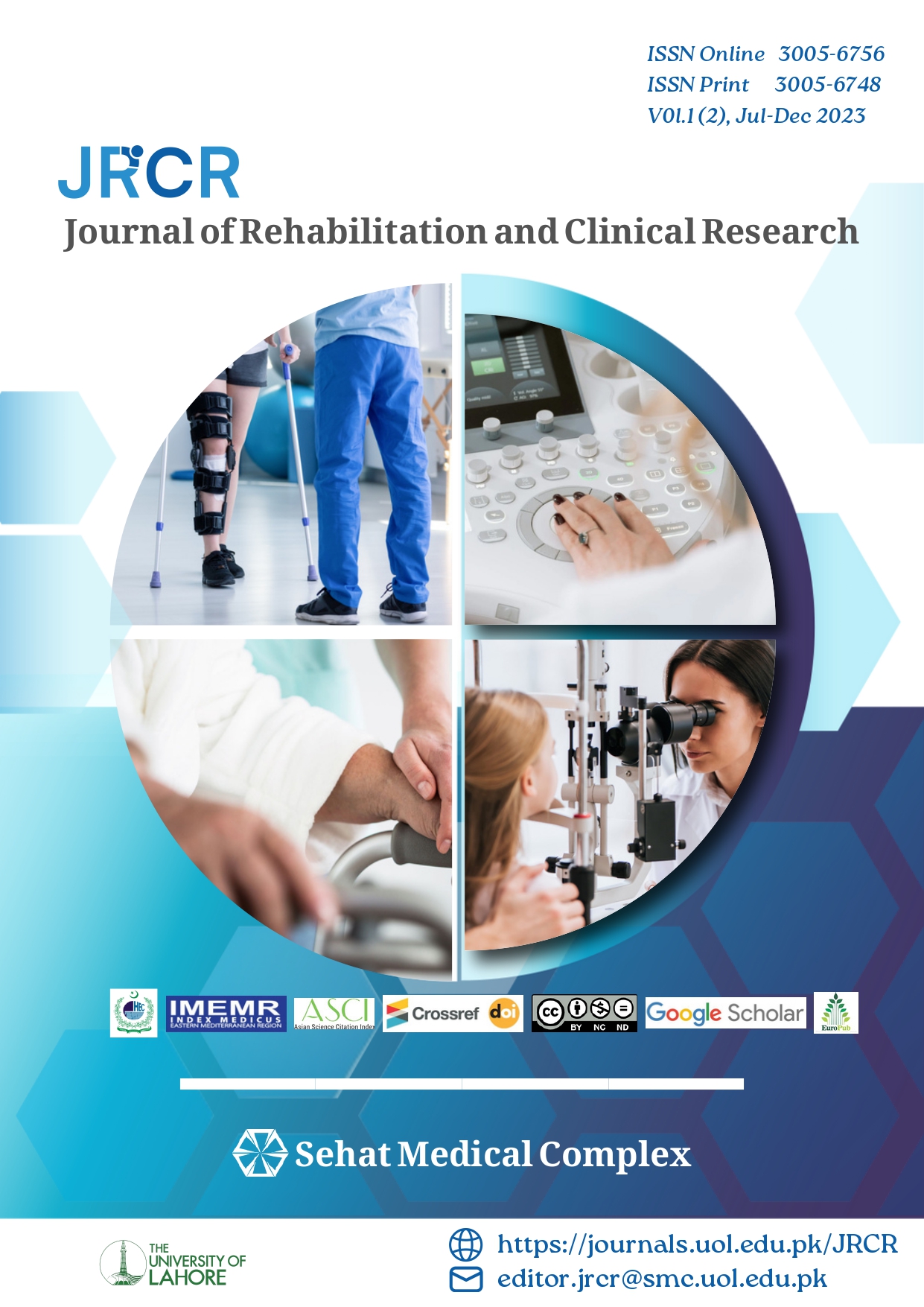Evaluation of Static and Dynamic Balance among Undergraduate Students of Allied Health Sciences in Sarhad University of Science and Information Technology, Peshawar
DOI:
https://doi.org/10.61776/jrcr.v1i2.2896Keywords:
Dynamic Balance, Leg Length, Single Leg Stance Test, Static Balance and Y Balance TestAbstract
Balance is acknowledged as a vital component of a human when doing various everyday tasks. An imbalance increases the risk of falling or getting hurt, which lowers the quality of life. The balance has two distinct types: static balance and dynamic balance. The aim of this study was to determine whether there is association or not between static and dynamic balance among undergraduate students of Allied Health Sciences of Sarhad University of Science and Information Technology Peshawar, Pakistan. An analytical cross-sectional study was conducted on 317 healthy participants using convenience sampling. A single leg stance test with eyes closed and eyes opened was used for static balance, and Y balance test was used for dynamic balance. Pearson Correlation was used to find relation static and dynamic balance. SPSS software version 20 was used in this study. The analysis revealed a correlation between static and dynamic balance (r=0.09), indicating a weakly positive relationship between the two dimensions. This cross-sectional study provides a comprehensive understanding of the static and dynamic balance skills in health sciences students. The findings may guide the development of targeted interventions to improve students’ balance and general physical abilities.
Downloads
Published
How to Cite
Issue
Section
License
Copyright (c) 2024 Tanveer Ahmad, Asma Nawaz, Umamah Ejaz; Iqbal Ali Shah

This work is licensed under a Creative Commons Attribution-NonCommercial-NoDerivatives 4.0 International License.
Authors retain copyright of their work and grant Journal of Rehabilitation and Clinical Research the right to publish it under a Creative Commons Attribution-NonCommercial-NoDerivatives 4.0 International (CC BY-NC-ND 4.0). This license permits sharing, copy and redistribute the material in any medium or format, provided proper attribution is given to the authors.
Authors may distribute the journal’s published version (e.g., in repositories, books, or other platforms) non-exclusively, with acknowledgment of its original publication here.
Authors are encouraged to share their work publicly (e.g., on personal websites or institutional repositories) to foster scholarly exchange.






